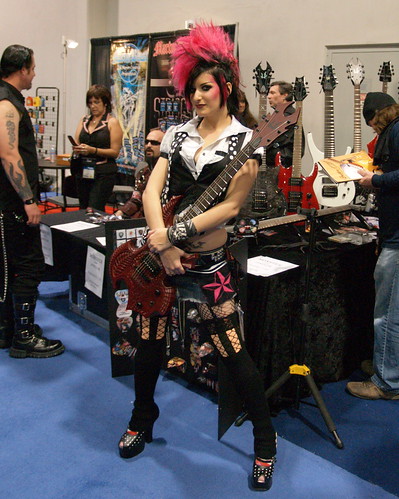What Does Your Personal User Interface Say About You?
27 Aug, 2008We human beings choose to decorate ourselves in a variety of manners—fashion, cosmetics, tattoos, piercings, surgery, etc.—to express ourselves and communicate unspoken signals to each other. Non-verbal cues are sent via our interface choices to everyone that we encounter on a daily basis. What messages are you trying to send through your own personal user interface?
Here are some examples of human UI patterns that we encounter, and the subtext that they silently communicate.
The Business Man
The conservative haircut, the dull necktie and his subtle frown clearly communicate that he’s all business. He’s not very approachable, but most likely fairly dependable. Intrepid reader, he is the human incarnation of the spread sheet.
The Entertainer
An acquired taste—he’s clearly trying extremely hard to amuse and entertain. He spent a fortune attending clown school and yearns to be the center of attention (a life caster perhaps?). Simultaneously friendly and annoying, the clown UI is not something most people can spend much time with.
It’s Complicated
This interface is enigmatic, complicated and intriguing. There is an intimidation factor, yet an underlying and attractive charm; a frustrating puzzle that keeps people returning in hopes of discovering a solution. If a person is open to it, an experiential interface that encourages discovery and requires time to figure out can be fun.
The Soldier
There is nothing ambiguous about this interface. It’s clear and completely direct; nothing is implicit. Depending on a person’s perspective, this interface can communicate security or menace. The soldier combines precision and discipline with the ability to understand and complete his directives. He is the embodiment of the command line.
The Best Software is Anthropomorphic
Just like people, software user interfaces can and should personify human attributes (no, I’m not talking about Clippy!). The best systems communicate to users via text, interaction and imagery to express the personality of the application. These are the applications that people become emotionally attached to because they remind us of what it means to be human.
Posted in Design, User Experience | Comments Off on What Does Your Personal User Interface Say About You?



